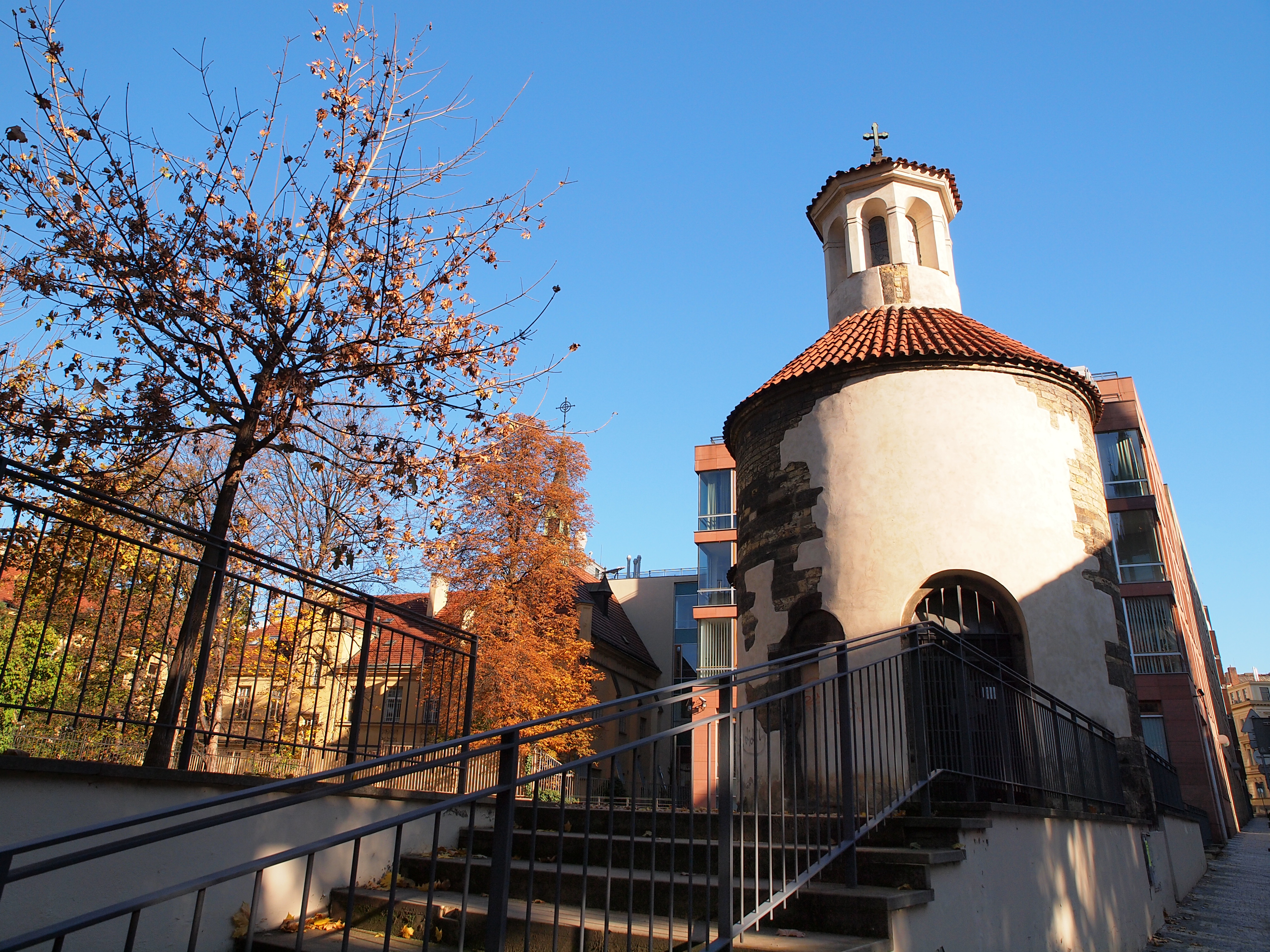Breadcrumbs navigation
Rotunda of St Longin (Rotunda sv. Longina)
The rotunda of St Longin was built at the beginning of the 12th century and is the smallest and second oldest of the three preserved Romanesque rotundas in Prague. In the 17th century, it was expanded with the addition of a parallel Baroque nave. The rotunda currently serves the Greek Catholic Church and the interior is decorated accordingly. Tours are available only upon prior agreement.
- Monuments & Architecture
- church
- rotunda
- Romanesque
Practical information
Open by appointment only.
Contacts
- Rotunda of St Longin (Rotunda sv. Longina)
- Na Rybníčku
- 120 00 Praha 2 – Nové Město
- +420603472532
Object history
This is the smallest and second oldest of the three Romanesque rotundas that have been preserved in Prague. According to legend, this was originally the site of a pagan temple and only after the arrival of Christianity was it turned into a Catholic chapel. It served as a parish chapel to the ancient Rybník settlement, which was recorded as part of the Břevnov Monastery's holdings in as early as 993. It could be in fact the case that the Benedictines built the rotunda. The rotunda was transferred to the Order of Teutonic Knights at the beginning of the 13th century, who in turn sold it to Queen Constance, the wife of Ottokar I of Bohemia. She donated it to the Hospital of St. Francis established by Saint Agnes of Bohemia, which went on to become the first Bohemian religious order -- the Knights of the Cross with the Red Star.
The rotunda, which was built in the early 12th century, was consecrated to St Stephen up until the 14th century. When Charles IV established the new St Stephen Church after founding the New Town in 1351, the consecration of the rotunda was changed and named in honour of Saint Longinus, whose remains Charles IV had brought from Italy. Saint Longinus was a Roman soldier who took part in the crucifixion of Jesus. He later deeply regretted his action, deserted from the army and spent decades living as a hermit until he was found and executed.
The original Romanesque church, a narrow, cylindrical structure topped by a cupola with a lantern and apse, was expanded to include a long, Baroque nave. Based on a decree issued by Joseph II, the church was closed in 1783 and turned into a warehouse for church tools. The rotunda was reopened in 1844 and thoroughly repaired in 1929 – 1934. At that time, the Romanesque columns and pillars of the lantern was well as the triumphal arch of the original Romanesque apse were uncovered.
Information source: www.exarchat.cz


